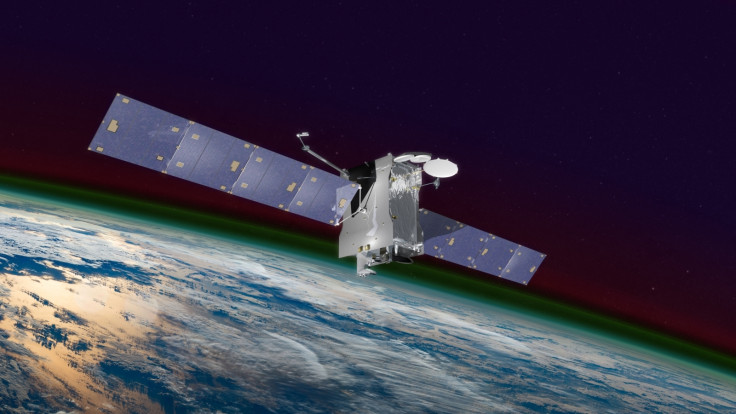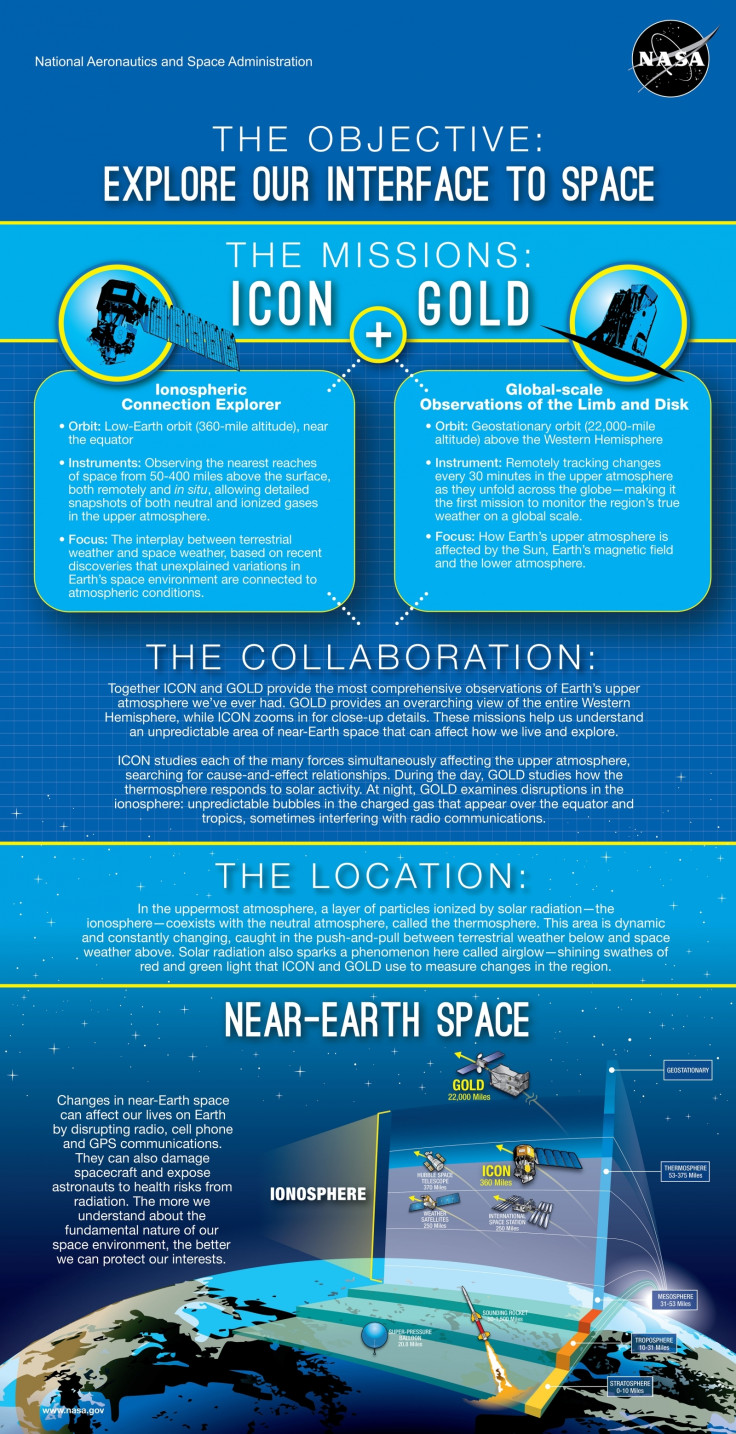Nasa Gold: Mission to study the 'intermingling' of outer space and Earth begins
Space weather and terrestrial weather both influence the ionosphere and there is not much that we know about it.

Nasa's Global-scale Observations of the Limb and Disk or Gold mission starts Thursday (25 January). It involves the study of the very top layers of the atmosphere and the "dynamic intermingling" between Earth and outer space.
The Gold mission will operate from an altitude of 22,000 miles above the Earth. The hosted payload aboard a commercial communications satellite is the first of its kind Nasa mission that will see an instrument flown as a commercially hosted payload.
Gold will study the interplay between ionosphere and thermosphere. The former is the uppermost layer of the earth's atmosphere located between 50-360 miles up and filled with charged particles, which interacts with the neutral thermosphere. Both these layers mingle and influence each other almost constantly.
Also, the effects that Earth's weather, space weather, and the influence of Earth's magnetic field have on each other will be researched under this mission.
"The upper atmosphere is far more variable than previously imagined, but we don't understand the interactions between all the factors involved," said Richard Eastes, Gold principal investigator at the Laboratory for Atmospheric and Space Physics at the University of Colorado Boulder. "That's where GOLD comes in: For the first time, the mission gives us the big picture of how different drivers meet and influence each other."
It is a first-time attempt to understand how and to what extent terrestrial weather and space weather influences the upper atmosphere. While this region is known to respond to climate changes, not much else is clear, says Nasa. The changes are also quite dramatic and can be seen in under an hour of any big climatic event, Eastes adds.
Big events like hurricanes and even Tsunamis are known to cause waves that travel to these layers, sometimes to space, which often causes disruptions in wind patterns. Similarly, from the outside, solar storms and magnetic storms can bring in charged particles that disrupt the weather at the very top of the atmosphere and these changes can have a big impact on Earth, reports Nasa.
"Space isn't just the home of astronauts and satellites; it affects our day-to-day lives," said Sarah Jones, Gold mission scientist at Nasa's Goddard Space Flight Center in Greenbelt, Maryland.
Satellites in low-Earth orbit (Leo) all operate in the ionosphere. This means communication signals, GPS and other satellite-based tech all travel through the ionosphere as well. The International Space Station also operates within the ionosphere, so sudden changes in this part has the ability to disrupt, or even sever these services, Nasa says.
"The first meteorological satellites revolutionised our understanding of — and ability to predict — terrestrial weather," said Elsayed Talaat, heliophysics chief scientist at Nasa headquarters in Washington. "We anticipate GOLD will give us new, similar insight into the dynamics of the upper atmosphere and our planet's space environment."






















